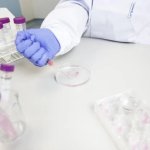
News • Tumour shrinking
"Downstaging" liver cancer before transplant improves outcomes
Treating liver cancer tumours to shrink them in order to allow the patient to qualify for a liver transplant leads to excellent 10-year post-transplant outcomes, according to new research.


























